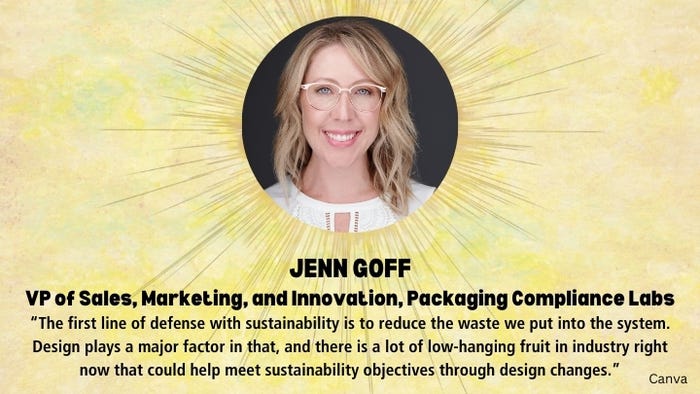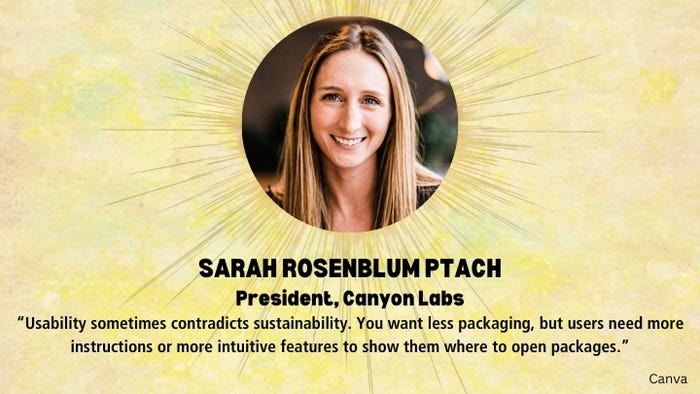2024 Predictions for Medical Packaging
At a Glance
- Sustainability takes center stage in 2024
- Material testing to surge
- Innovative sterilization methods emerge
What medical packaging trends are most likely to garner attention in 2024? Packaging Digest explored this during a virtual roundtable with industry experts. These packaging professionals are also involved with organizing the successful healthcare packaging conference thePACKout. The meeting generated many thought-provoking questions — some of which remain unanswered — as these medical packaging professionals identified key challenges and a roadmap for the year ahead.
Participants joining the discussion included:
Sarah Rosenblum Ptach, President, Canyon Labs; Co-Founder, thePACKout; Communications Board Member, Medical Device Packaging Technical Committee (MDPTC) of the Institute of Packaging Professionals; and Aseptic Presentation Program Manager, Kilmer Innovations in Packaging (KiiP).
Jenn Goff, Vice President of Sales, Marketing, and Innovation, Packaging Compliance Labs; Co-Founder, thePACKout; and Guest Lecturer, Michigan State University.
Kiley Djupstrom, Independent Consultant; Co-Founder, thePACKout; and Sustainability Program Manager, Kilmer Innovations in Packaging (KiiP).
Lisa McTigue Pierce, Executive Editor of Packaging Digest, moderated the conversation.
In addition to identifying five key talking points — sustainability, innovation in design and usability, regulations, testing, and sterilization — participants discussed how industry is affecting meaningful change, as witnessed by working groups like Kilmer Innovations in Packaging (KiiP).
Rosenblum Ptach sums it up thus: “I’ve never seen industry groups really change the industry like they have been this past year — and they’re definitely going to do so in 2024.”
Predictions were also made for another successful thePACKout conference in 2024 (May 14-16; Coronado, California), with more than 30 industry members currently working on the agenda.
1. Sustainability.
No doubt, this will continue to be a key trend in 2024. No longer just a buzzword, sustainability has found a permanent home in medical device manufacturers’ product stewardship goals and led to the creation of dedicated sustainability departments that transcend “just packaging.”
“Sustainability is now an initiative that has backing in companies, and that is something we didn’t see before,” says Rosenblum Ptach, who referenced players that have paved the way for others to follow suit, such as J&J’s Ethicon, which introduced its sustainable tray materials at last year’s thePACKout conference.
Although talk often centered on materials of concern and the impact of impending regulations, Goff brought the conversation back to sustainability’s primary goal:

“The first line of defense with sustainability is to reduce the waste we put into the system,” she says. “Design plays a major factor in that, and there is a lot of low-hanging fruit in industry right now that could help meet sustainability objectives through design changes.”
Participants shared that a lot of innovative materials are being introduced to meet sustainability initiatives, including self-sterilizing materials, but questions remain regarding their viability as well as regulatory requirements.
2. Innovation in design and usability.
According to participants, usability in design is another trend worth watching in 2024.
“In the past, packaging engineers have been siloed to consider performance requirements or cost saving initiatives or — now — sustainability,” Rosenblum Ptach says. “Usability, and people, are being considered more than they ever have in design.”
Rosenblum Ptach admits that there are a lot of competing priorities when it comes to design:

“Usability sometimes contradicts sustainability,” she says. “You want less packaging, but users need more instructions or more intuitive features to show them where to open packages. And sterilization is changing, so maybe the materials you used in the past don’t work anymore because you’re trying to switch to E-beam or something else.”
Goff notes that the shift to at-home diagnostic tests, such as COVID-19 tests, is further driving the need for usability.
“The end user’s ability to perform aseptic transfer could impact the test that they are performing on themselves,” she says. “So how are we creating and designing packaging that’s intuitive for the general population? I think that’s going to be a huge driver in a lot of companies going forward.”
An ASTM usability guidance is likely to be released in 2024 that ties in with ISO 11607 Section 7.
3. Regulations.
An ongoing trend for 2024 is the increasingly stringent global regulations coming down the pike. Medical device companies were urged to prepare.
“Regulation can be a catalyst for innovation and a sustainability enabler — and it’s beginning to really drive change in that regard,” notes Djupstrom. “For example, MDMs are increasingly focused on eliminating both regulated and non-regulated materials of concern from products and packaging to get ahead of impending regulation.”
Djupstrom urged MDMs to engage their supply chain partners: “When it comes to any regulation, don’t wait,” she says. “[Suppliers] have solutions in place or strategies of how to navigate this.”
Regulations to keep an eye on in 2024 include the EU Medical Device Regulation (MDR), EU Packaging and Packaging Waste Directive, and an ASTM work item aiming to establish a relationship between material attributes and package performance.
4. Testing.
Regarding testing, material availability challenges will lead to an increase in testing — and more specific testing — in 2024 to better understand material characteristics.
“With material changes and dual sourcing becoming more of a thing, you have to show a correlation of performance, so there’s much more comparative testing going on,” Rosenblum Ptach explains. “Generally speaking, you’re going to have material properties being more important to consider within your testing. A lot of industry standards that were created to solve problems across large ranges of packaging are going to get much more specific.”
Heightened by the supply chain crisis and uptick in testing, MDMs are under more pressure to know their materials — and suppliers are under more pressure to supply data about those materials. According to Rosenblum Ptach, interesting R&D test methods are available for companies to compare properties of performance as well as material property tests that may have been overlooked in the past.
5. Sterilization.
Interviewees agreed that more and more companies are coming up with innovative sterilization methods as alternatives to ethylene oxide (EO) sterilization — a trend predicted to gain momentum in 2024. These include Phiex Technologies’ chlorine dioxide sterilization method and Sterile State’s nitric oxide sterilization method.
Despite these developments, Goff warns that change will be slow, with capacity issues, supply chain challenges, and testing requirements delaying the adoption of new sterilization technologies.
Additionally, Rosenblum Ptach encourages MDMs to challenge their status quo of sterilization and look at different modalities that are coming to market. “There are pros and cons to each and it’s a learning curve for us all to find out which ones are most compatible with our products and packaging, but more important, with the issues we are trying to solve internally.”
Djupstrom adds that although environmental concerns were the initial driver for finding EO alternatives, MDMs are also being driven by supply chain issues and lessons learned during the pandemic.

“Industry realized we need to have more resilience,” she says. “So you’re seeing a lot of collaboration, especially in markets like biopharma and pharma, to validate redundant or alternative sterilization modalities.”
Article Source : MDDI









